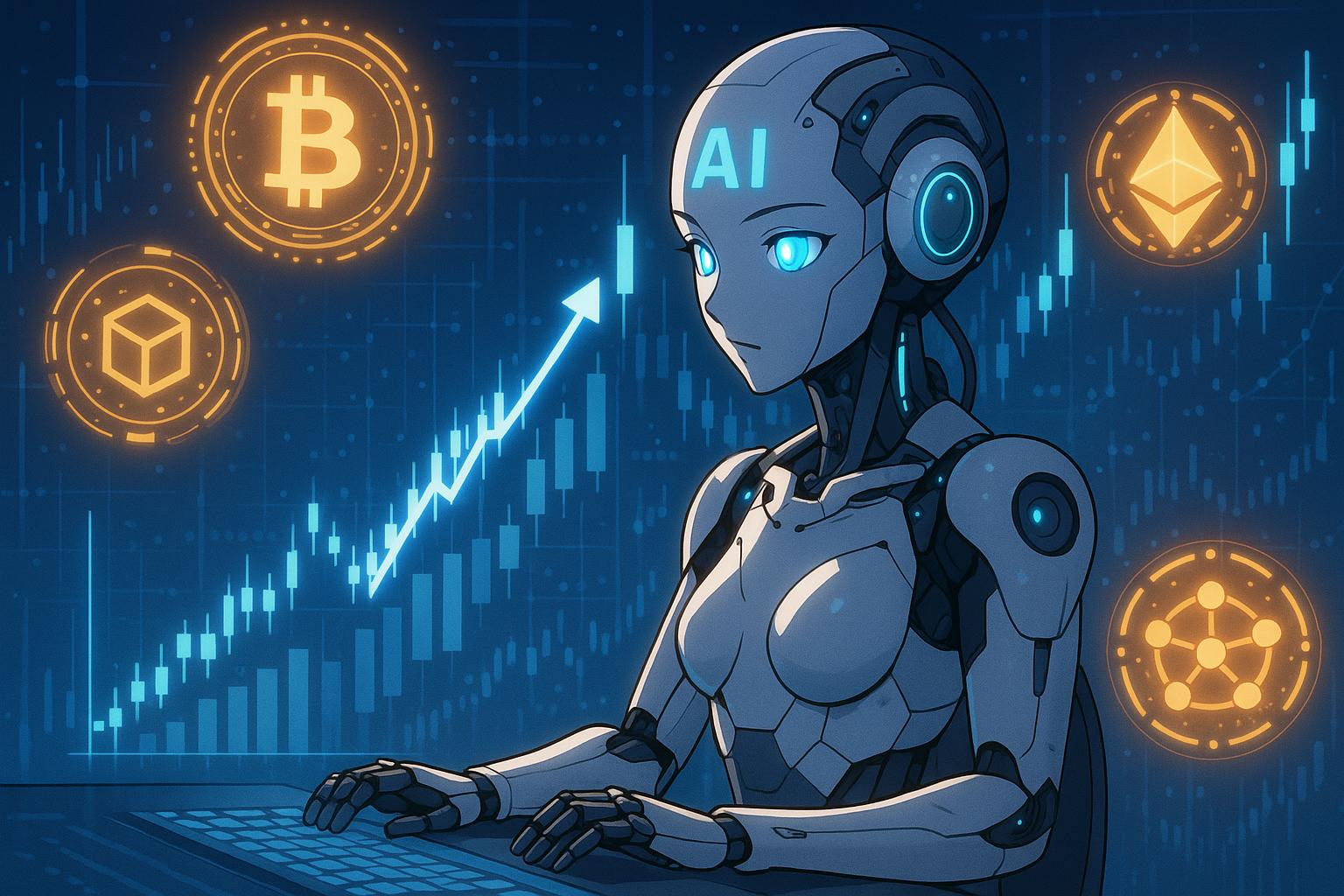The recent surge in discussions surrounding artificial intelligence (AI) regulation has escalated into a focal point of interest, particularly after a provocative post by Twitter user Mihir on May 23, 2025. Mihir's call to confine AI job replacements to fields deemed unsuitable for human involvement—thinking specifically of hazardous environments such as chemical plants and the extreme conditions of space exploration—has reverberated across social media platforms. This conversation transcends a mere ethical debate, as it profoundly impacts financial markets, notably the cryptocurrency sector where AI-related tokens and blockchain technologies are becoming increasingly entwined.
Following Mihir's post, the cryptocurrency market observed a significant reaction. Tokens linked to AI, such as Fetch.ai (FET) and SingularityNET (AGIX), witnessed rapid price increases—FET jumped 8.2% to $1.75 and AGIX rose 6.5% to $0.92 within a single day. CoinMarketCap reports revealed that overall trading volumes for these tokens surged, highlighting heightened investor interest tied to the regulatory discussions surrounding AI. The market sentiment on this day underscored a broader movement, where total cryptocurrency market capitalisation increased by 3.1% to $2.4 trillion, suggesting a ripple effect driven by renewed enthusiasm for AI narratives.
On the trading front, the emergence of AI regulation dialogues has introduced both opportunities and risks. Investors’ reactions—from the abrupt spikes in transaction volumes to the fluctuations in trading activity for AI tokens—suggest a speculative but cautiously optimistic sentiment among traders. In the 24 hours following Mihir's post, Fetch.ai recorded a notable 15% increase in transaction volume on the Ethereum blockchain. This uptick aligns with tangible growth in retail and institutional interests, further extending the implications of AI regulation discussions into the crypto space.
However, the swift rise of AI tokens does pose certain dangers. Regulatory proposals perceived as overly restrictive could incite panic sell-offs, leading to profound market volatility. Additionally, the correlation between AI token performance and established Ethereum reflects a complex interrelationship; when Ethereum stabilises or rises, AI tokens can experience amplifying gains. The relative strength indications of Fetch.ai and SingularityNET at this time hinted at bullish momentum, yet traders remained aware of potential overbought scenarios.
The implications of AI regulation extend beyond mere market fluctuations; they raise pertinent questions regarding employment dynamics within the crypto industry. As AI technologies increasingly automate compliance and monitoring roles, there are significant reductions in traditional job positions. At the same time, this shift creates new opportunities for specialised roles such as AI specialists and blockchain identity architects, reflecting a transitional phase in workforce needs. Analysts emphasise the importance of human oversight even as AI systems proliferate, which amplifies the urgency for professionals to adapt to continuously evolving market conditions.
Furthermore, regulatory bodies are beginning to respond. The New York State Department of Financial Services (NYDFS) is actively searching for a policy specialist dedicated to tackling the intertwined challenges posed by AI, cryptocurrency, and financial regulations. This proactive stance illustrates the industry's recognition of the necessity for governance that can cope with swift technological changes while ensuring consumer protection and market integrity.
Looking ahead, the cryptocurrency market is keenly aware of the implications posed by AI regulations. As conversations intensify and the quest for regulatory clarity unfolds, the evolving landscape will likely serve as a key indicator of both market sentiment and risk tolerance. The interplay of speculation and innovation within the crypto sector continues to reflect a broader narrative centered on AI's potential for transformation—not just in technology, but in employment and economic paradigms. As stakeholders navigate this landscape, the future of both AI and cryptocurrency appears intrinsically linked, emphasizing the call for balanced regulations that promote further growth while safeguarding public interests.
Reference Map:
- Paragraph 1 – [1], [3]
- Paragraph 2 – [1], [2]
- Paragraph 3 – [1]
- Paragraph 4 – [4], [3]
- Paragraph 5 – [5], [6]
- Paragraph 6 – [1], [5]
- Paragraph 7 – [3], [4]
- Paragraph 8 – [1], [2], [3]
Source: Noah Wire Services
